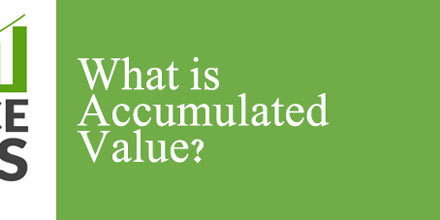
The Retirement Saver's Credit aims to incentivize low- to moderate-income individuals and families to save for retirement by offering valuable financial benefits. Officially known as the Saver's Credit, it directly reduces the amount of federal income tax you owe, making it easier to save for the future while enjoying immediate tax benefits.
What is the Retirement Saver's Credit?
The Retirement Saver's Credit, provided by the IRS, rewards eligible taxpayers who contribute to retirement savings accounts like 401(k)s and IRAs with a tax credit. It's designed to encourage individuals with lower incomes to save for retirement, thereby promoting financial security in later years.
Calculating the Saver's Credit
The Retirement Saver's Credit operates on a percentage-based system that directly reduces your federal income tax liability based on your retirement savings contributions. Here's how it works:
Percentage of Contribution
The credit is calculated as a percentage of the contributions you make to eligible retirement savings accounts during the tax year. The percentage varies based on your adjusted gross income (AGI) and filing status:
- 50% Credit: Available to taxpayers with AGI up to the lower limit of the eligibility range.
- 20% Credit: Available to taxpayers with AGI between the lower and higher limits.
- 10% Credit: Available to taxpayers with AGI at or near the upper limit of the eligibility range.
Maximum Contribution Considerations
The credit is capped at a maximum contribution of $2,000 per person ($4,000 for married couples filing jointly). This means that even if you contribute more than this amount, the credit calculation is based only on the maximum eligible contributions.
For instance, if you are eligible for a 20% credit and you contribute $1,000 to a qualifying retirement account, your Saver's Credit would be $200 ($1,000 * 20%).
Claiming the Credit

To claim the Retirement Saver's Credit, file Form 8880, Credit for Qualified Retirement Savings Contributions, with your tax return. This form helps you calculate the credit amount based on your contributions and income, ensuring you receive the maximum benefit available.
Benefits of the Retirement Saver's Credit for 2022
The Retirement Saver's Credit is a powerful incentive designed to encourage retirement savings among low- to moderate-income taxpayers. Here are the key benefits of this credit for 2022:
Direct Tax Reduction
The most significant benefit of the Retirement Saver's Credit is that it provides a direct reduction in your federal income tax liability. This is a tax credit, meaning it reduces the amount of tax you owe on a dollar-for-dollar basis, which can result in substantial tax savings.
Encourages Retirement Savings
Credit incentivizes individuals to contribute to their retirement accounts, promoting long-term financial security. By reducing current taxes, it makes the idea of saving for the future more attractive.
Double Benefit with Contributions
In addition to receiving the credit, contributions to a traditional IRA or 401(k) may also reduce your taxable income through standard deductions. This dual benefit can lead to even greater tax savings.
Accessible to a Broad Range of Taxpayers
The credit is available to various taxpayers, including employees, self-employed individuals, and those with different types of retirement accounts. This inclusivity makes it easier for many people to benefit from the incentive.
Income Adjustments for Inflation
The income thresholds for the Retirement Saver's Credit are adjusted annually for inflation, ensuring that the credit remains accessible to a similar percentage of the population despite changes in the cost of living.
Drawbacks of the Retirement Saver's Credit for 2022
Understanding these drawbacks can help you better evaluate the Retirement Saver's Credit and make informed decisions about your retirement savings strategy.
Income Eligibility Limits

One of the main drawbacks of the Retirement Saver's Credit is its restrictive income eligibility limits. In 2022, credit will be accessible exclusively for individuals and families with incomes that are low to moderate. The income limits are set at $66,000 for married couples filing jointly, $49,500 for heads of household, and $33,000 for single filers or married individuals filing separately. These limits exclude higher-income individuals from taking advantage of the credit, thereby limiting its accessibility.
Contribution Cap
Another limitation is the contribution cap used to calculate the credit. The credit is based on the first $2,000 of contributions per individual or $4,000 for married couples filing jointly. Contributions beyond these amounts do not increase the credit, which can be a disadvantage for those who are able to and wish to contribute more to their retirement accounts.
Non-Refundable Nature
The Retirement Saver's Credit is non-refundable. This means that the credit can only reduce your tax liability to zero, but it cannot result in a refund if the credit amount exceeds your total tax liability. Therefore, individuals with very low or no tax liability may not fully benefit from the credit, as it cannot provide them with a refund.
Complexity in Claiming
To claim the Retirement Saver's Credit, you need to fill out IRS Form 8880, which is titled Credit for Qualified Retirement Savings Contributions. This form allows you to receive the credit based on your eligible retirement savings contributions. This form can be complex and may deter some eligible individuals from claiming credit, especially those who are not familiar with tax forms and filing procedures. The added complexity can be a barrier to accessing the credit's benefits.
Phase-Out Ranges
The percentage of credit decreases as income increases within the eligible range. This phased approach means that those with incomes near the upper limits of eligibility receive a smaller percentage of their contributions as a credit. Therefore, the benefit of credit decreases for individuals and families at the higher end of the income eligibility range, reducing its impact on them.
Conclusion
In conclusion, the Retirement Saver's Credit offers a significant opportunity for individuals and families aiming to save for retirement while lowering their current tax liability. By grasping the eligibility requirements, the mechanics of the credit, and the process of claiming it, you can optimize its advantages and solidify your financial outlook for the future.











